Of Fever Dreams and Reality Checks
What I really learned from visiting the Kodak Factory & Eastman Museum
Do you remember the Willy Wonka event in Glasgow? The one that looked so incredibly depressing, but turned out to be probably the funniest thing that happened last year? Don’t worry—visiting the Kodak factory wasn’t quite like that. But emotionally, I could not help drawing some parallels. And honestly, Willy Wonka and George Eastman? Maybe second cousins.

In the fall of 2024 my “photo-friends” [aka Jason, Caleb & David] and I got the Golden Ticket to the Kodak Factory. Except it did not start out that exciting at first. It was actually just a pretty regular ticket to visit the George Eastman museum in Rochester, NY. Along with it, though, came a tiny, little glimmer of hope, that perhaps, maybe, if we’re lucky, we mayyy be able to peek into the factory at some point. But that was very much up to the film gods. Thankfully, one of the CineStill-film-gods, Steve, was with us and pulled strings left and right for us.
The Eastman Museum
Thanks to Steve, we got a private tour of the George Eastman Museum and access to the vault on day one. We got to really see some real national treasures: the camera used in Wizard of Oz, Ansel Adam’s camera case, a Moon-Hassy, to name a few. It was truly awesome. Walking through that vault, surrounded by sentimental photography memorabilia and Eastman’s eccentric mansion, was an experience. Honestly, it felt a little bit like entering the Chocolate Factory, I’m not gonna lie. In my weird little bubble film photography is this precious, beautiful, sacred thing. Almost magical. It’s also fragile, constantly on the edge of extinction that needs to be saved and taken care of. To see Eastman having created this weird, extravagant and quite frankly ridiculous living space for himself—complete with a giant Elephant head—somehow made sense. It felt fitting that only someone living in their own quirky universe would understand the beauty of photography similar to the way I do.

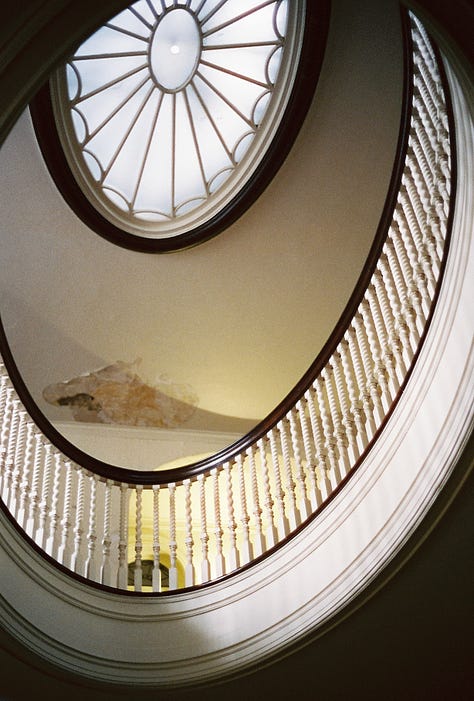
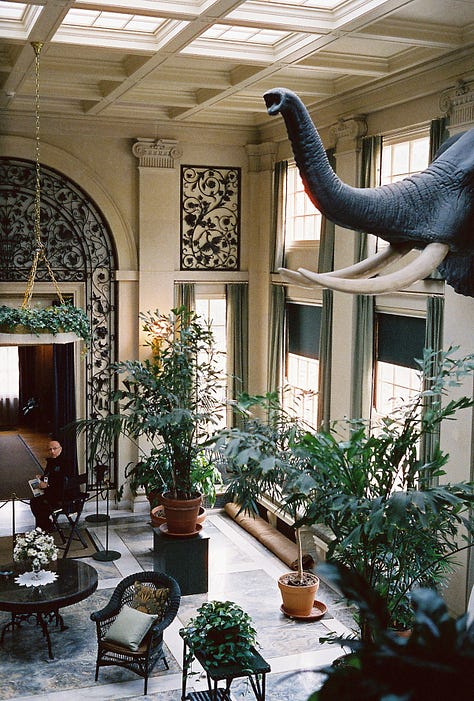
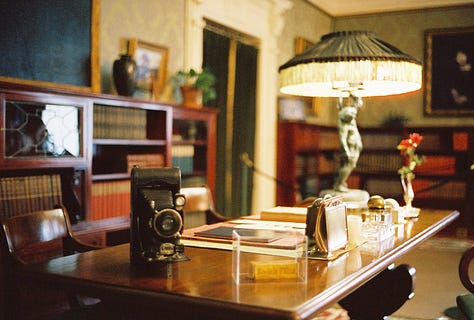
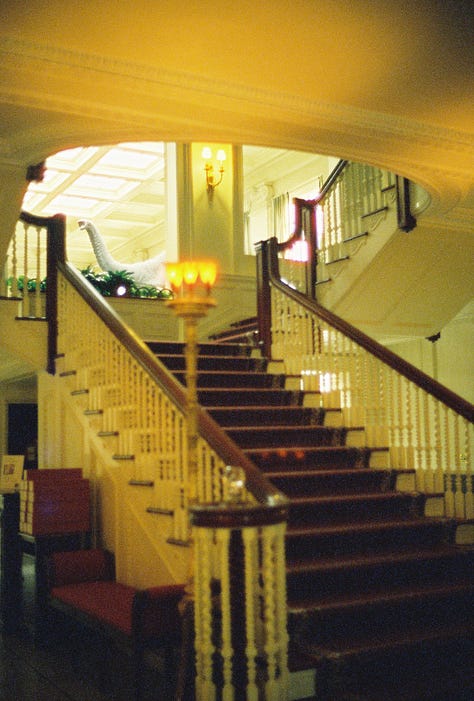
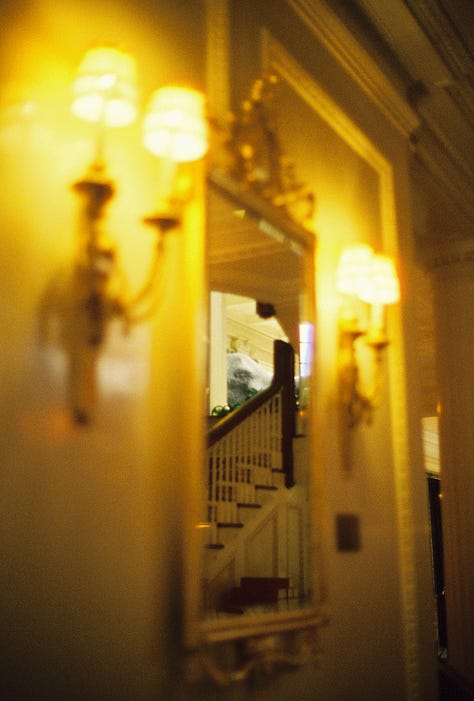

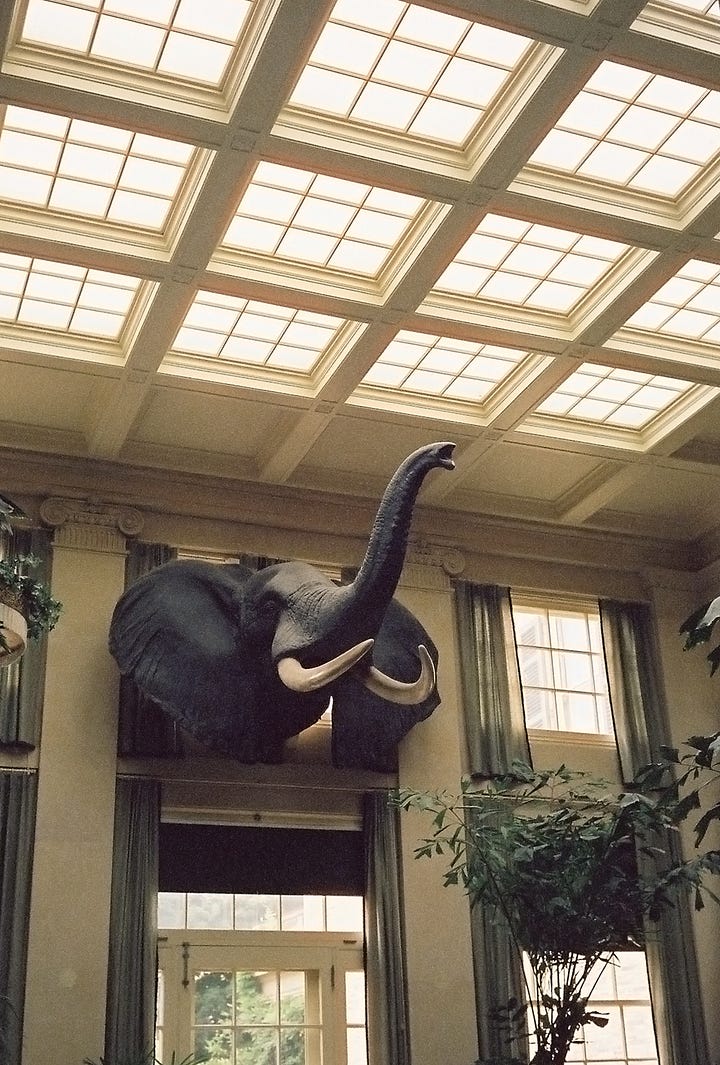
On our tour through this lavishly decorated mansion, we heard a number of stories about the founder of Kodak and his unique personality. One that stuck with me is that he hired a pianist who’s job it was to sit at the piano and start playing whenever Eastman entered the room. In his beautiful library, we saw that he meticulously organized his books and clearly had a lot of respect for the written word – both fiction and non-fiction. His interior was designed in incredible detail, everywhere you looked. He seemed to be a collector of all sorts of things. A sentimental and nostalgic man. He had a thing for safaris and hunting and proudly presented his keepsakes, like the giant elephant head. And while my first reaction to all that was a single giant eye roll, it made me think a little bit more about what photography would have meant to someone like him.
The type of photography George Eastman was striving to creating for the masses was not art. At the time, photography was still far from the art world, in fact it was quite the opposite. It served as a tool for documentation and still reserved for professionals, due to its complex process and expensive gear needed. Before having wandered through his home, I would have guessed he was a business man who saw an opportunity to turn photography into a mass-medium for financial gain. That he wanted to bring this very handy tool into homes around the world because it’s practical. It makes life easier, which really is at the root of most inventions. And of course, that may very well still have been part of his drive, evidently the Kodak brand did a pretty damn good job with that, as we all know.
However, exploring his magical, almost childish wonderland, shifted my perspective. I began to think that Eastman had a real emotional connection to photography as a concept. Clearly there is something to be said about nostalgia and the drive to collect things, let alone memories. Beyond the practicality of documentation, for some of us photographers there is the urge to hold on to things. Some explain this from a pretty positive perspective of wanting to make beautiful moments last longer and for others it’s coming from a place of fear. The fear to forget, to lose. Personally, I believe it is always the latter that really is behind the urge to want to capture moments on a camera, but I don’t mind putting the optimist’s twist on it semantically.
When we’re out there capturing big and small moments in our lives, we are quite literally trying to freeze time for one reason or another. Photography allows us to do just that in more ways than one. The act of taking a photo, especially on film, imprints the moment in our minds. Taking the time to stop in your tracks, to meter the light, set the camera, look through the viewfinder and make the conscious decision to press the shutter in that very moment—all that helps to take in the moment. It’s learning a moment by heart, if you will, within only a few seconds. Film photography means noticing the ‘now’ and deciding to embrace it. To me that’s a form of meditation and a big part of why film photography feels so precious. And this is, I decided, how the founder of Kodak must have felt too.
Riding high on this sense of shared understanding with Eastman (or Georgie, how I now call him in my head) our little tour group suddenly ran into another private tour, including the CEO of Kodak. After a very brief interaction, he asked: “Do you want to tour the factory tomorrow?” And without really waiting for our response (which of course, was an unanimous ‘hell yes’), he stepped aside, pulled out his phone and ‘made a quick call’, like businessmen do. And there it was. Our Golden Ticket magically appeared in the middle of the fabulous world of George Eastman.
The Factory
And so it happened, that on day 2 of our Rochester trip, we really pulled up to the gates of the Kodak factory and they really opened for us. Kodak’s CTO, Terry R. Taber was leading our little nerd-group through one of the remaining buildings of the Eastman Business Park, which span over 100 acres.
The contrast between this day and the previous was striking. I certainly was not expecting more elephants and antiques, but I did imagine a bustling factory humming machines and workers running around from one station to the next. Instead, it was eerily quiet.
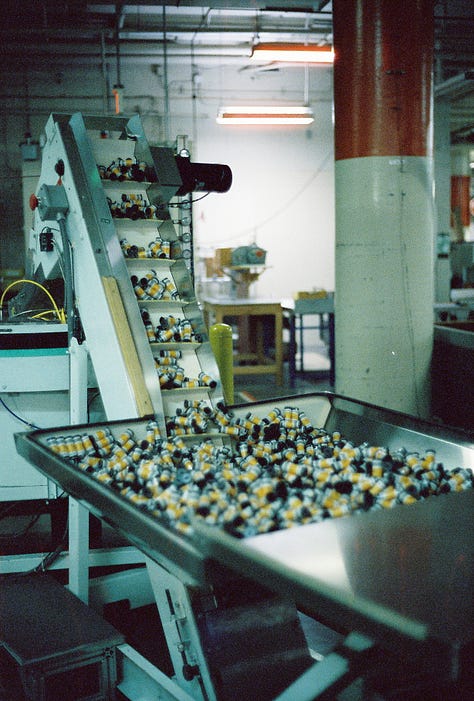
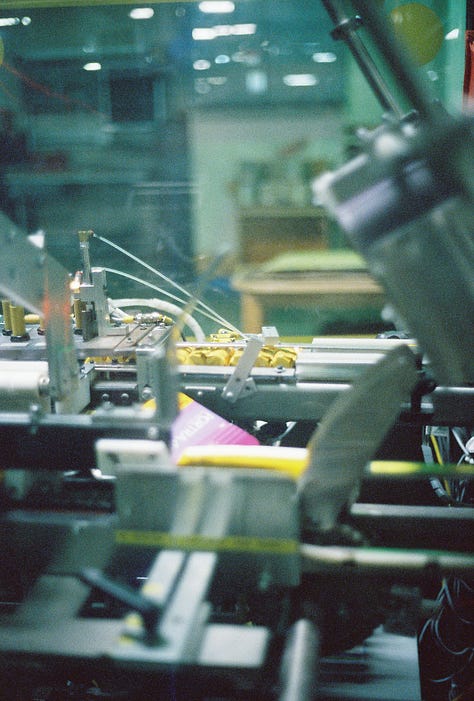


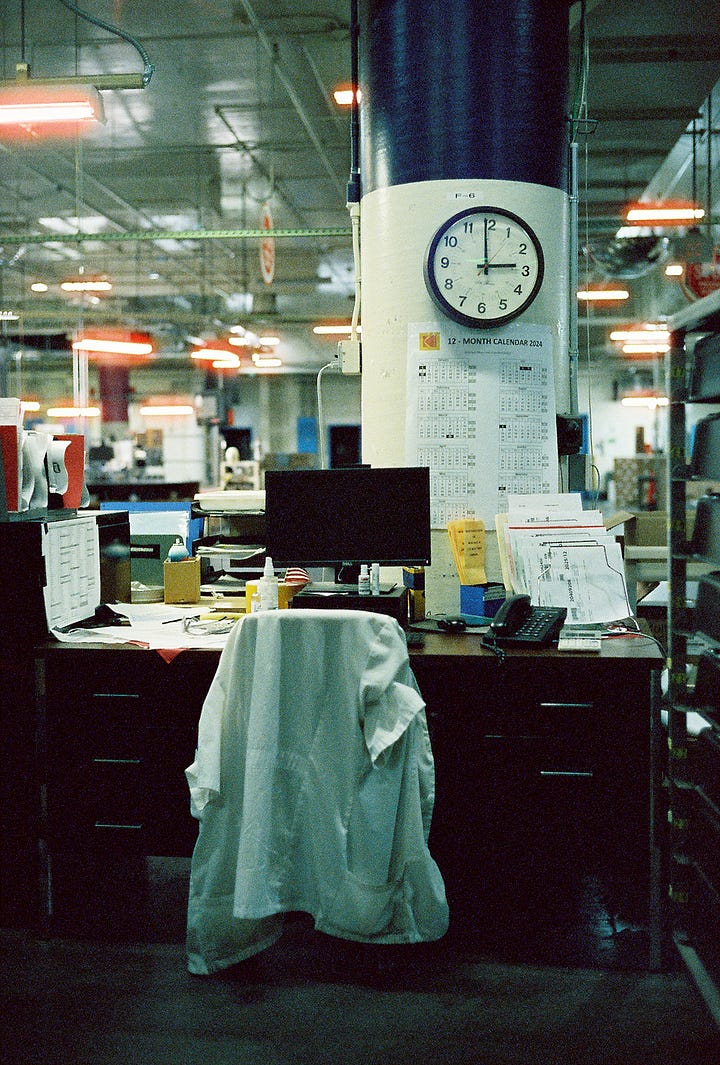
We did see, of course, big master rolls, giant machines filling entire rooms, bins full of Portra 400 rolls fresh off the conveyor belt, and I did dip a film canister into the big pile of perforation glitter. But it was all very quiet and empty around all of that. We passed uncountable empty rooms, cantinas and bathrooms that looked like no one has used them in decades. At some point we stumbled upon a couple of people going through their daily routines at their work station. It was a little corner in a big room, where a couple of workers sat under the bright lights of their desk lamps, looking down at their hands. This was the Super8 packaging station, we learned, where workers put together the Super8 canisters—by hand, one by one, day by day.
This was the ultimate reality-check. Film Photography may have been the focus of my entire professional career for the past 7 years, but it’s just the tiniest little sliver of a business here in this massive Eastman Business Park in 2024, and even smaller out there in the world. In Eastman’s mansion, time was frozen in a 1932 capitalist fever dream, while the factory complex felt more like it was left behind in 1989 after the collapse of the GDR and a rush into a new (digital) world.
I want to make clear I am mostly recalling the feeling of the visit here. Factually, the tour was incredibly interesting, and it was impressive to see all the stages our film goes through before it lands in our cameras. It is also worth noting that we were told Kodak just invested in expanding the film production in a big way for the first time in decades. They are in the process of adding another spooling machine, which has been the bottleneck in the previous years. So there is the glimmer of a brighter future for film, I will continue to hold on to.
But all that aside, I somehow got stuck on looking at these two contrasting experiences as a sort of metaphor for the state of film photography versus what it means to me. Most of the articles and videos I consume about film photography are focused on rising prices, old products get discontinued, new products suck, gear talk, reviews and technicalities. That’s a pretty grim reality to live in. I am not saying those are not interesting topics to think about and deal with, but perhaps it is just as important to sometimes take a step back. Back into Eastman’s unicorn-and-rainbow-estate to remember why we even bother with all this. Because at the end of the day it is the idea behind it that really gets me out there to shoot.

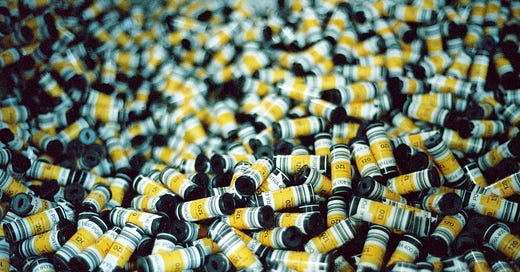


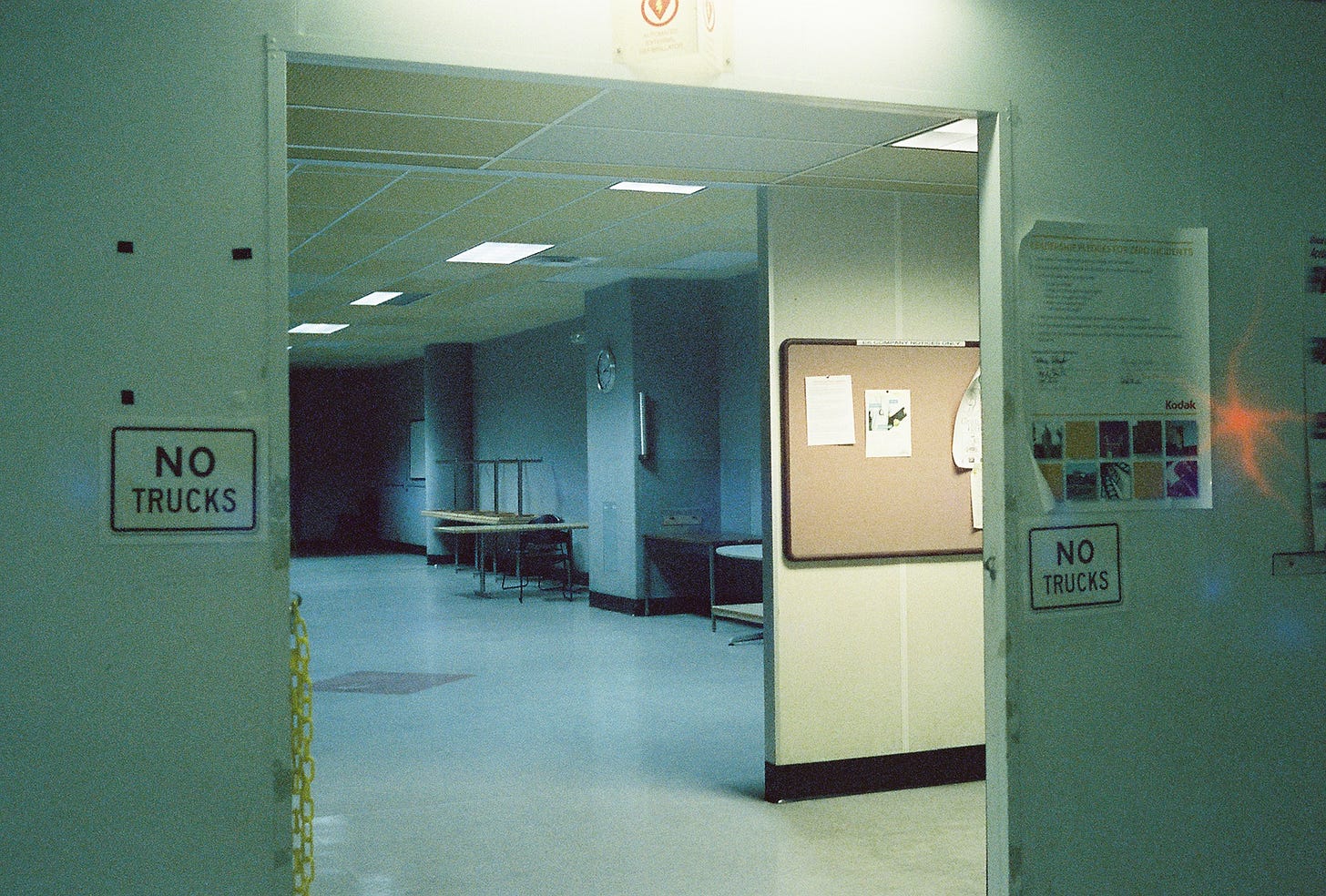
Great article and Beautiful photos! More please!!!
Love this!